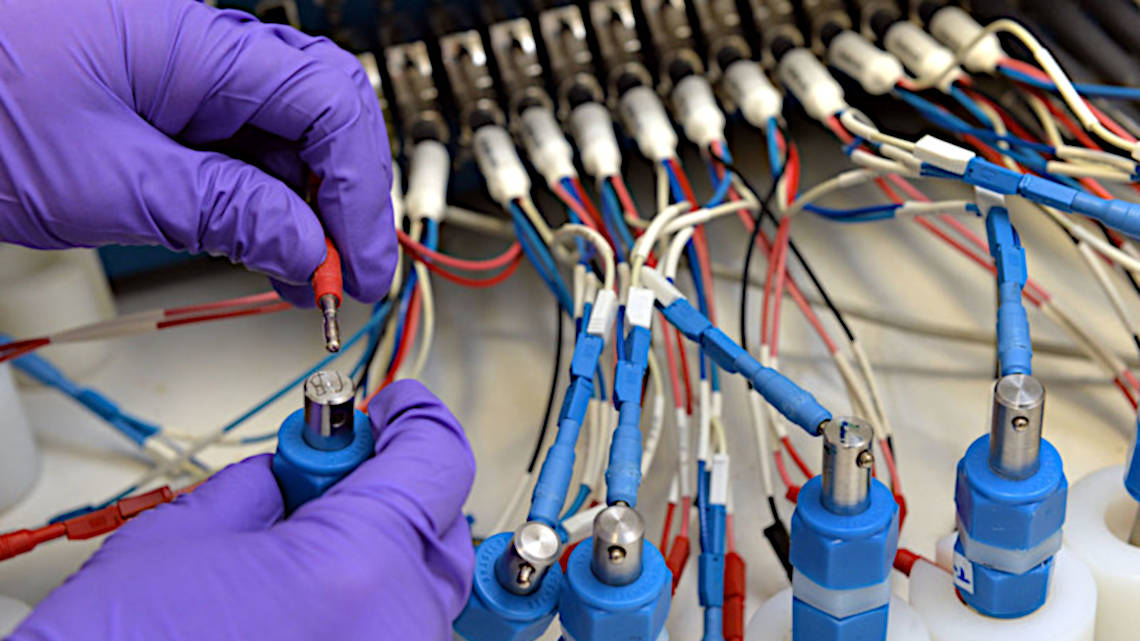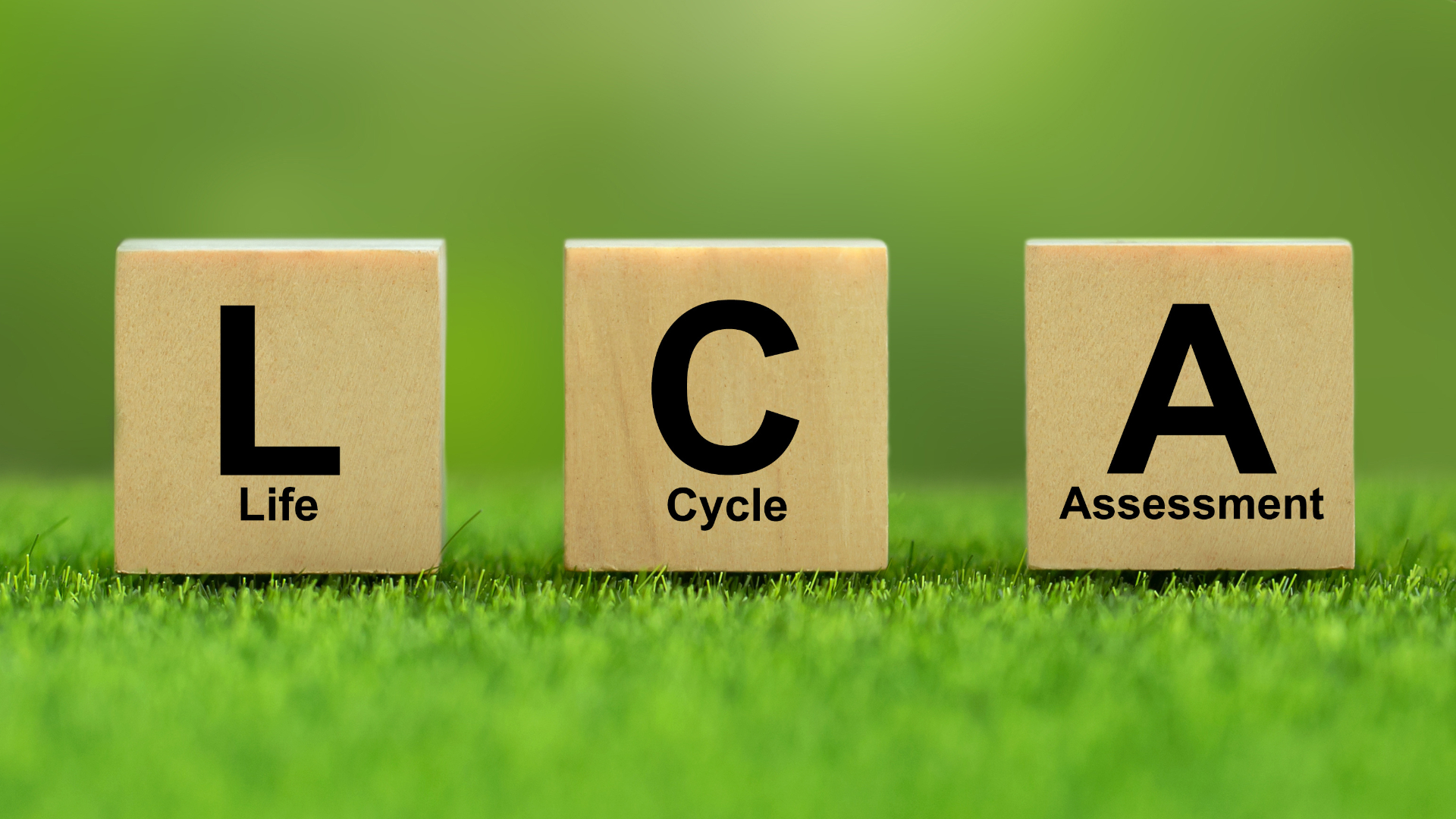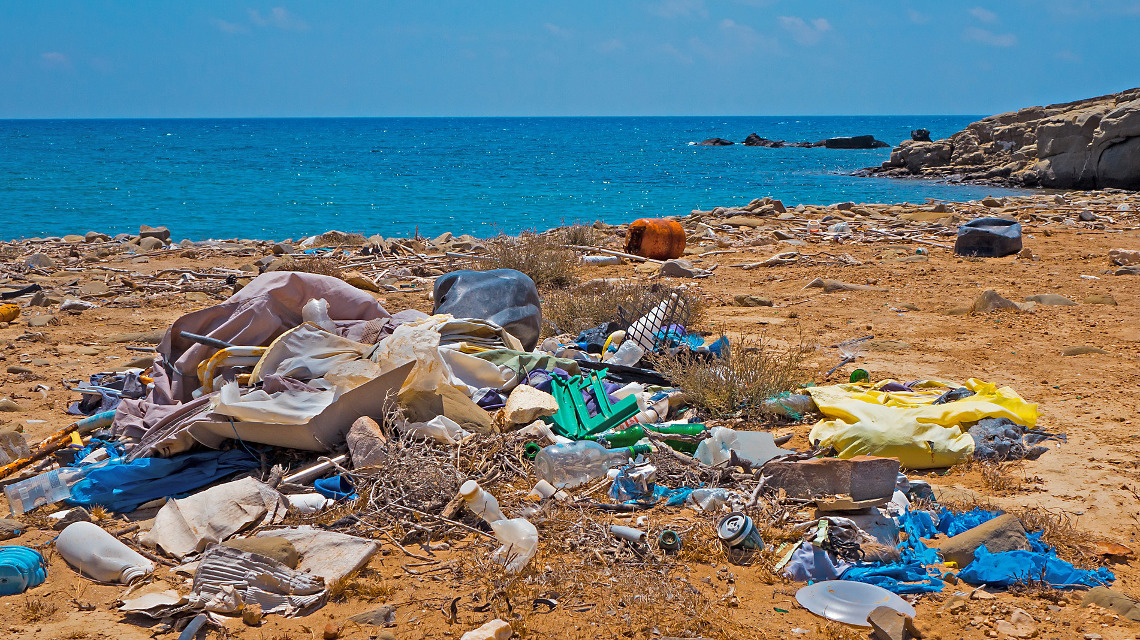A battery made from renewables
Max Planck Researchers are working to develop sustainable alternatives for each component of the ecologically problematic electricity storage systems.

Electric cars or a fully regenerative power supply: Both areas of energy system transformation, which are so important for climate protection, require efficient power storage systems. So far, however, batteries have often been ecologically and socially problematic because they require certain metals that can only be mined to the detriment of humans and the environment. Researchers at the Max Planck Institute (MPI) for Colloids and Interfaces in Golm have therefore set themselves the goal of replacing all the problematic components of batteries with renewable resources.
Vanillin instead of lithium
The first association for many people is the alkali metal lithium, often in combination with cobalt. " We need substances that release electrons and can then reabsorb them," explains MPI researcher Clemens Liedel. "These can be metals, which then become metal ions, but also organic substances." One promising organic substance that his team is working on is vanillin. The aroma substance of vanilla can be easily produced from lignin and thus from wood. In principle, vanillin could replace lithium cobalt oxide as cathode material. However, it is a brittle powder, which requires some chemical tricks. The chemists have tested the use of a binder such as chitosan, which can be obtained from shrimp shells, for example, combined with carbon black, which can also be produced from biomass. Liedel and his team are currently developing a pure vanillin-carbon mixture that could do without binding agents.
Ionic liquid as electrolyte
Electrolytes provide the charge exchange in batteries. "Currently, solutions of toxic lithium salts in flammable organic carbonates are common," Liedel explains. Here, too, his team has found an alternative - so-called ionic liquids. "Ionic liquids are good conductors for other ions, are hardly volatile and therefore flame-retardant. They are also purely organic and can be produced from renewable raw materials. TAnother advantage of ionic liquids is that their electrochemical parameters can be easily adjusted. Another advantage of ionic liquids is that their electrochemical parameters can be easily adjusted.
Liedel also has a renewable resource alternative for the separators that prevent a short circuit between the poles of a battery: the aforementioned chitosan. The researchers have combined this into a fine-pored network. "The anions in particular migrate well through the pores," reports Liedel.
Assembling the biobattery
Liedel's colleague Martin Oschatz is working on an alternative to lithium for the anode and found it in sodium. In combination with a specially designed carbon polymer and carbon black, initial tests have already been successful.
While Oschatz wants to further develop his approach in order to produce better supercapacitors, Liedel now wants to combine the different components to create a biobattery. "However, we still have some details to clarify," says Liedel. It is still unclear, for example, how well the ionic liquid chemically combines with the biobased electrode material vanillin.
The chemist is supported by the German Research Foundation (DFG), which is funding the development of polymer-based battery materials for six years with 12 million euros - including the MPI researcher's project.
bl/um


